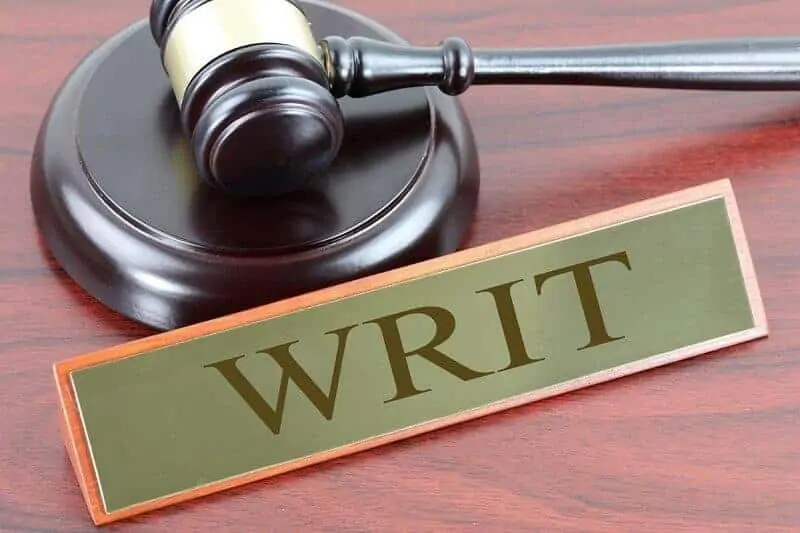Is your right to privacy in life, liberty or security is violated or threatened? If so, you may file a petition for the issuance of a writ of habeas data. A. M. No. 08-1-16-SC provides for the rules on the writ of habeas data.
What is a writ of habeas data?
The writ of habeas data is a remedy available to any person whose right to privacy in life, liberty or security is violated or threatened by an unlawful act or omission of a public official or employee, or of a private individual or entity engaged in the gathering, collecting or storing of data or information regarding the person, family, home and correspondence of the aggrieved party.
Who may file a petition for the writ of habeas data?
Any aggrieved party may file a petition for the writ of habeas data.
However, in cases of extralegal killings and enforced disappearances, the petition may be filed by any member of the immediate family of the aggrieved party, namely: the spouse, children and parents; or in default of them, any ascendant, descendant or collateral relative of the aggrieved party within the fourth civil degree of consanguinity or affinity.
Where should the petition be filed?
The petition may be filed with the Regional Trial Court where the petitioner or respondent resides, or that which has jurisdiction over the place where the data or information is gathered, collected or stored, at the option of the petitioner.
The petition may also be filed with the Supreme Court or the Court of Appeals or the Sandiganbayan when the action concerns public data files of government offices.
What must be alleged in the petition for a writ of habeas data?
A verified written petition for a writ of habeas data should contain:
- The personal circumstances of the petitioner and the respondent;
- The manner the right to privacy is violated or threatened and how it affects the right to life, liberty or security of the aggrieved party;
- The actions and recourses taken by the petitioner to secure the data or information;
- The location of the files, registers or databases, the government office, and the person in charge, in possession or in control of the data or information, if known;
- The reliefs prayed for, which may include the updating, rectification, suppression or destruction of the database or information or files kept by the respondent. In case of threats, the relief may include a prayer for an order enjoining the act complained of; and
- Such other relevant reliefs as are just and equitable.
What happens next after filing the petition?
Upon the filing of the petition, the court, justice or judge shall immediately order the issuance of the writ if on its face it ought to issue. The clerk of court shall issue the writ under the seal of the court and cause it to be served within three (3) days from the issuance; or, in case of urgent necessity, the justice or judge may issue the writ under his or her own hand, and may deputize any officer or person serve it. The writ shall also set the date and time for summary hearing of the petition which shall not be later than ten (10) work days from the date of its issuance.
Who is bound by the writ?
The respondent upon whom the writ was served will be bound. The respondent here is the public official or employee threatening to commit or committing an unlawful act, or the private individual or entity engaged in the gathering, collecting or storing of data or information regarding the person, family, home and correspondence of the person or party that secured the writ or for whose benefit the court issued the writ of habeas data.
How shall the writ be served?
It shall be served by a judicial officer or by a person deputized by the court, justice or judge who shall retain a copy on which to make a return of service. In case the writ cannot be served personally on the respondent, the rules on substituted service shall apply.
What must the respondent do upon receiving the writ?
The respondent must file a verified written return together with supporting affidavits within five (5) working days from service of the writ, which period may be reasonably extended by the Court for justifiable reasons. The return shall, among other things, contain the following:
- The lawful defenses such as national security, state secrets, privileged communications, confidentiality of the source of information of media and others;
- In case of respondent in charge, in possession or in control of the data or information subject of the petition:
- disclosure of the data or information about the petitioner, the nature of such data or information, and the purpose for its collection;
- the steps or actions taken by the respondent to ensure the security and confidentiality of the data or information; and
- the currency and accuracy of the data or information held; and,
- Other allegations relevant to the resolution of the proceeding.
In case the respondent fails to file a return, the court, justice or judge shall proceed to hear the petition ex parte, granting the petitioner such relief as the petition may warrant unless the court in its discretion requires the petitioner to submit evidence.
Is a hearing needed on the petition for writ of habeas data?
Yes, but the hearing on the petition shall be summary. However, the court, justice or judge may call for a preliminary conference to simplify the issues and determine the possibility of obtaining stipulations and admissions from the parties.
How long should it take for the judge to decide on the petition for writ of habeas data?
The court shall render judgment within ten (10) days from the time the petition is submitted for decision.
If the allegations in the petition are proven by substantial evidence, the court shall enjoin the act complained of, or order the deletion, destruction, or rectification of the erroneous data or information and grant other relevant reliefs as may be just and equitable; otherwise, the privilege of the writ shall be denied.
Upon its finality, the judgment shall be enforced by the sheriff or any lawful officers as may be designated by the court, justice or judge within five (5) working days.
Where shall the writ be enforceable?
The writ of habeas data shall be enforceable anywhere in the Philippines.
How do you challenge the decision of the judge?
Any party may appeal, within five (5) working days from the date of notice of the judgment or final order, to the Supreme Court under Rule 45. The appeal may raise questions of fact or law or both.
Can you file other actions when you already filed a petition for writ of habeas data?
Yes. The filing of a petition for the writ of habeas data shall not preclude the filing of separate criminal, civil or administrative actions.
When a criminal action is filed subsequent to the filing of a petition for the writ, the latter shall be consolidated with the criminal action. When a criminal action and a separate civil action are filed subsequent to a petition for a writ of habeas data, the petition shall be consolidated with the criminal action.
What is the effect of filing a criminal action?
When a criminal action has been commenced, no separate petition for the writ shall be filed. The relief under the writ shall be available to an aggrieved party by motion in the criminal case.
About Nicolas and De Vega Law Offices
If you need assistance in any civil or other criminal law-related issues, we can help you. Nicolas and de Vega Law Offices is a full-service law firm in the Philippines. You may visit us at the 16th Flr., Suite 1607 AIC Burgundy Empire Tower, ADB Ave., Ortigas Center, 1605 Pasig City, Metro Manila, Philippines. You may also call us at +632 84706126, +632 84706130, +632 84016392 or e-mail us at [email protected]. Visit our website www.ndvlaw.com.









